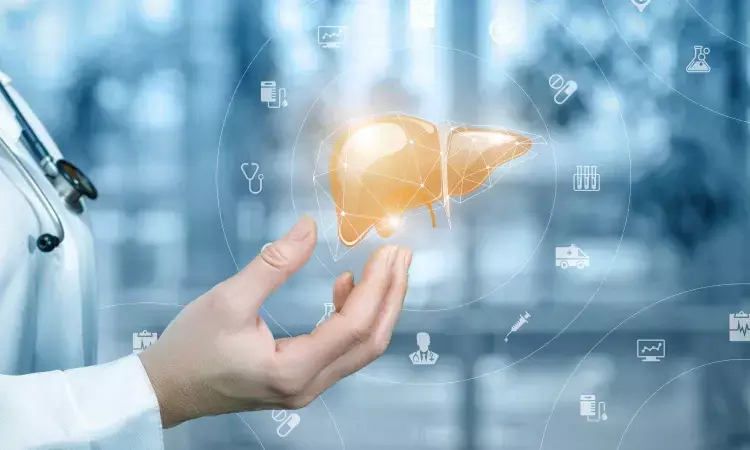- Home
- Medical news & Guidelines
- Anesthesiology
- Cardiology and CTVS
- Critical Care
- Dentistry
- Dermatology
- Diabetes and Endocrinology
- ENT
- Gastroenterology
- Medicine
- Nephrology
- Neurology
- Obstretics-Gynaecology
- Oncology
- Ophthalmology
- Orthopaedics
- Pediatrics-Neonatology
- Psychiatry
- Pulmonology
- Radiology
- Surgery
- Urology
- Laboratory Medicine
- Diet
- Nursing
- Paramedical
- Physiotherapy
- Health news
- Fact Check
- Bone Health Fact Check
- Brain Health Fact Check
- Cancer Related Fact Check
- Child Care Fact Check
- Dental and oral health fact check
- Diabetes and metabolic health fact check
- Diet and Nutrition Fact Check
- Eye and ENT Care Fact Check
- Fitness fact check
- Gut health fact check
- Heart health fact check
- Kidney health fact check
- Medical education fact check
- Men's health fact check
- Respiratory fact check
- Skin and hair care fact check
- Vaccine and Immunization fact check
- Women's health fact check
- AYUSH
- State News
- Andaman and Nicobar Islands
- Andhra Pradesh
- Arunachal Pradesh
- Assam
- Bihar
- Chandigarh
- Chattisgarh
- Dadra and Nagar Haveli
- Daman and Diu
- Delhi
- Goa
- Gujarat
- Haryana
- Himachal Pradesh
- Jammu & Kashmir
- Jharkhand
- Karnataka
- Kerala
- Ladakh
- Lakshadweep
- Madhya Pradesh
- Maharashtra
- Manipur
- Meghalaya
- Mizoram
- Nagaland
- Odisha
- Puducherry
- Punjab
- Rajasthan
- Sikkim
- Tamil Nadu
- Telangana
- Tripura
- Uttar Pradesh
- Uttrakhand
- West Bengal
- Medical Education
- Industry
Liver transplant candidates of small stature faced with long waiting list and decreased access to organ

A new study by Catherine Kling and team suggests that candidates on the liver waitlist with the lowest body surface area (BSA) were at a disadvantage because of their reduced size. The findings of this study were published in JAMA Surgery.
Smaller waiting candidates are far less likely to obtain a liver transplant than bigger ones. As a result, the purpose of this study was to assess the magnitude of the size gap and to explore various policy remedies.
Based on preset body surface area (BSA) ratio limitations, a decision analytical model was developed to match liver transplant donors to waiting applicants. Adult dead liver transplant donors and waitlist candidates from the Organ Procurement and Transplantation Network database were included from June 18, 2013, to March 20, 2020. The data was examined from January 2021 to September 2021. Applicants were divided into six groups based on their BSA, from smallest (group 1) to greatest (group 6). (group 6). The outcomes of the waitlist were investigated. Under the current acuity circle liver allocation strategy, a match run was made for each donor, and the fraction of applicants qualified for a liver based on BSA ratio was computed. Following that, novel allocation models were investigated.
The key findings of this study were:
1. The research included 41 341 donors and 84 201 waitlist candidates.
2. Donors had a median age of 42 years (IQR, 28-55), whereas waiting applicants had a median age of 57 years (IQR, 50-63).
3. Ladies outnumbered males in the two smallest BSA groupings.
4. With each increase in group size, waiting time reduced and the fraction of the group receiving transplant increased.
5. Under the existing acuity circle allocation mechanism, the smallest two groups of applicants were disadvantaged, with 37% and 7.4% less livers distributed in comparison to their proportional representation on the waitlist.
6. This gap was overcome by allocating the smallest 10% of donors (by BSA) to the smallest 15% of hopefuls, as well as doing split liver transplants.
Reference:
Kling, C. E., Biggins, S. W., Bambha, K. M., Feld, L. D., Perkins, J. H., Reyes, J. D., & Perkins, J. D. (2023). Association of Body Surface Area With Access to Deceased Donor Liver Transplant and Novel Allocation Policies. In JAMA Surgery. American Medical Association (AMA). https://doi.org/10.1001/jamasurg.2023.0191
Neuroscience Masters graduate
Jacinthlyn Sylvia, a Neuroscience Master's graduate from Chennai has worked extensively in deciphering the neurobiology of cognition and motor control in aging. She also has spread-out exposure to Neurosurgery from her Bachelor’s. She is currently involved in active Neuro-Oncology research. She is an upcoming neuroscientist with a fiery passion for writing. Her news cover at Medical Dialogues feature recent discoveries and updates from the healthcare and biomedical research fields. She can be reached at editorial@medicaldialogues.in
Dr Kamal Kant Kohli-MBBS, DTCD- a chest specialist with more than 30 years of practice and a flair for writing clinical articles, Dr Kamal Kant Kohli joined Medical Dialogues as a Chief Editor of Medical News. Besides writing articles, as an editor, he proofreads and verifies all the medical content published on Medical Dialogues including those coming from journals, studies,medical conferences,guidelines etc. Email: drkohli@medicaldialogues.in. Contact no. 011-43720751


